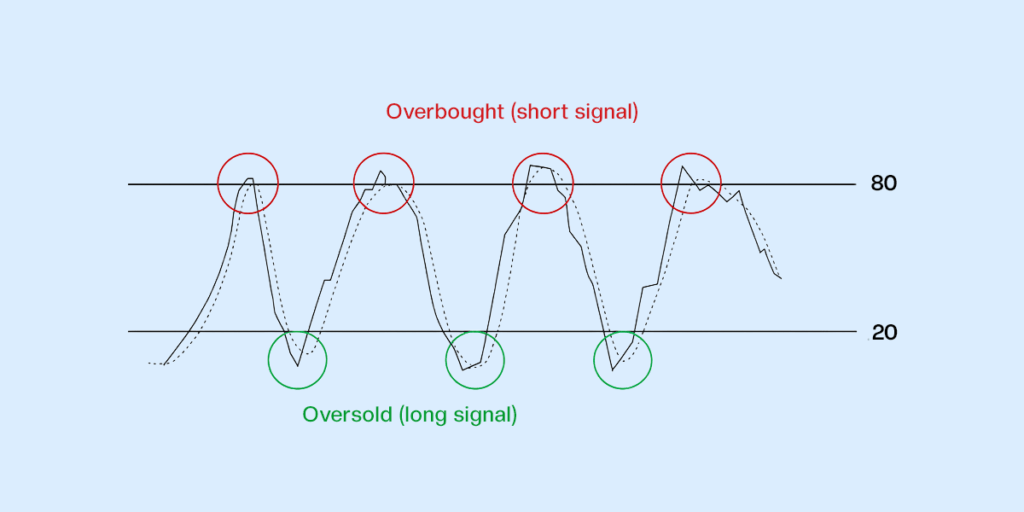Quick Summary:
Portfolio diversification in investing helps mitigate risk and potentially enhance returns. Diversification means investing across different asset classes, which helps mitigate the impact if one particular asset class performs poorly. Read on to understand different key diversification strategies, the benefits of portfolio diversification, and common mistakes investors should avoid.
What is Portfolio Diversification?
Portfolio diversification is an investment strategy for managing risk by spreading investments across various asset classes, including stocks, bonds, real estate, and other securities. The goal is to reduce the impact of poor performance in any single investment on the overall portfolio.
Why Diversification is Important
Diversification helps mitigate the impact of poor performance in one asset class by balancing it with better performance in others. For example, if your stocks underperform during a market downturn, your bonds or real estate investments may provide stability or even gains. This helps cushion the overall impact on your portfolio.
Risk Reduction with Diversification
Diversification reduces unsystematic risk, which is specific to individual companies or industries. By investing across different sectors and markets, you spread out this type of risk.
For instance, if one sector faces difficulties, other sectors may still perform well, reducing the overall risk to your portfolio. This strategy enhances the stability and potential returns of your investments.
Types of Diversification Strategies
Here’s an overview of key diversification strategies you can employ based on your financial goals and risk tolerance.
Asset Class Diversification
Diversifying across asset classes helps manage risk and capitalise on various market opportunities. Each asset class has distinct characteristics:
- Stocks: Represent ownership in companies and offer growth potential but come with higher volatility.
- Bonds: Fixed-income securities that provide steady income with lower risk than stocks.
- Real Estate: Includes investments in property and land, which can offer stable returns and act as a hedge against inflation.
- Commodities: Basic goods like gold, oil, and agricultural products, which can provide diversification and act as a hedge against inflation.
Geographic Diversification
Investing across different geographic regions reduces the impact of regional economic downturns and provides exposure to global growth opportunities:
- Domestic Markets: Include investments within your home country, reflecting local economic conditions.
- International Markets: Investing in foreign markets exposes you to different economic cycles and growth prospects outside your home country.
Sector Diversification
By investing across various sectors, you can protect against sector-specific risks:
- Technology: This includes companies involved in electronics, software, and IT services that may benefit from technological advancements.
- Healthcare: Encompasses pharmaceuticals, biotechnology, and medical services, often less sensitive to economic cycles.
- Consumer Goods: This includes companies that produce everyday products, which can offer stability even during economic downturns.
Diversification by Investment Vehicle
Using different investment vehicles helps spread risk and tap into various opportunities:
- Individual Stocks: Allow for targeted investments in specific companies but can carry higher risk if not balanced with other assets.
- Mutual Funds: Pooled funds that invest in a diversified portfolio of stocks, bonds, or other assets managed by professionals.
- ETFs: Similar to mutual funds but traded like stocks, providing flexibility and liquidity.
How to Build a Diversified Portfolio?
Creating a diversified portfolio involves more than just picking various investments; it requires a thoughtful approach to aligning with your personal goals and risk tolerance. Follow these steps to build a well-rounded portfolio that meets your financial objectives.
Assessing Risk Tolerance
Your risk tolerance reflects how comfortable you are with fluctuations in your investment values. Younger investors, who have more time to recover from market dips, often prefer a higher allocation to equities (stocks) because they offer growth potential. Conversely, older investors nearing retirement might prefer bonds or other lower-risk assets to preserve capital and ensure a steady income.
Allocating Assets Based on Time Horizon
Your investment horizon—how long you plan to invest before needing the funds—should guide your asset allocation. For long-term goals, like retirement in 20-30 years, you can afford to take on more risk with higher exposure to equities, leading to higher growth; for shorter-term goals, such as saving for a down payment on a house within a few years.
Rebalancing Your Portfolio
Rebalancing involves periodically adjusting your portfolio to maintain your desired asset allocation. Over time, some investments may grow faster than others, altering the balance of your portfolio. Regular rebalancing ensures you stay aligned with your risk tolerance and investment goals, preventing overexposure to any single asset class.
Benefits of Portfolio Diversification
Diversifying your investment portfolio offers numerous advantages, primarily centred around managing risk and achieving more stable returns. Understanding these benefits can help you create a more resilient and effective investment strategy.
Lower Volatility
Diversified portfolios generally experience lower volatility compared to those concentrated in a single asset class or sector. By spreading investments across different assets, you can reduce the overall fluctuation in portfolio value, offering greater stability even during uncertain market conditions.
Improved Risk-Adjusted Returns
Diversification can improve risk-adjusted returns by balancing risk and reward. A well-diversified portfolio often provides more consistent returns over time, allowing you to achieve better outcomes without taking on excessive risk.
Common Mistakes to Avoid in Portfolio Diversification
Effective diversification is crucial for managing investment risk and achieving stable returns. However, many investors fall into common traps that can hinder their portfolio’s performance. These include:
Over-Diversification
One significant mistake is over-diversification, where having too many investments can dilute potential returns and complicate portfolio management. When you spread investments too thinly, you might struggle to track performance effectively, which can lead to missed opportunities or unnoticed losses.
So, aim for a balanced approach by selecting a manageable number of well-researched investments that align with your goals rather than simply trying to include as many assets as possible.
Ignoring Correlation
Another common pitfall is ignoring the correlation between assets. True diversification involves investing in assets that don’t move in the same direction.
You’re not achieving true diversification if you invest in highly correlated assets—such as different tech stocks. Instead, focus on including assets with low correlations to each other to better spread risk and enhance the stability of your portfolio.
The Bottom Line
Diversification helps mitigate risk by ensuring that the portfolio is not overly dependent on the performance of a single investment or market segment. Regardless of an investor’s risk tolerance, a well-diversified portfolio is crucial for effectively balancing risk and return.
Appreciate investment app supports this strategy by providing easy access to asset classes and global markets. This allows investors to build and maintain a diversified portfolio tailored to their individual needs and objectives.
FAQs
What is portfolio diversification?
Portfolio diversification is the practice of spreading investments across various asset classes, sectors, or geographical regions to reduce exposure to any single asset or risk. This approach helps manage risk and stabilise returns over time.
Why is diversification important in investing?
Diversification is crucial because it mitigates the impact of poor performance in any single investment on the overall portfolio. By holding various investments, you can achieve more stable returns and reduce the risk of significant losses.
What are the main strategies for diversifying a portfolio?
Main strategies include diversifying across different asset classes, such as stocks, bonds, and real estate, as well as within asset classes by investing in various sectors and companies. Geographic diversification involves spreading investments across different countries or regions.
How does diversification reduce risk?
Diversification reduces risk by ensuring that not all investments are affected equally by market fluctuations or economic downturns. If one investment performs poorly, others may perform better, balancing out potential losses.
Can diversification improve returns?
While diversification primarily focuses on risk reduction, it can also improve returns by capturing gains from different investments that perform well at various times. This balanced approach can lead to more consistent overall performance.
What is asset class diversification?
Asset class diversification involves investing in different types of assets, such as equities, fixed income, real estate, and cash. This strategy helps spread risk because each asset class responds differently to market conditions.
How often should I rebalance my portfolio?
Rebalancing should be done periodically, such as annually or semi-annually, or when significant market changes alter the portfolio’s allocation. Regular rebalancing helps maintain your desired risk level and investment goals.
What is the best way to diversify my portfolio?
The best way to diversify is to include a mix of asset classes, sectors, and geographic regions in your investments. Tailoring the mix to your risk tolerance, investment horizon, and goals ensures effective diversification.
Is it possible to over-diversify a portfolio?
Yes, over-diversification can occur when adding too many investments dilutes potential returns and makes managing the portfolio complex. It can also lead to unnecessary transaction costs and reduce the impact of individual high-performing assets.
How does geographic diversification help in reducing risk?
Geographic diversification spreads investments across different countries and regions, which can mitigate risks associated with economic or political instability in any single area. This approach helps balance the impact of regional downturns on the overall portfolio.
Disclaimer: Investments in securities markets are subject to market risks. Read all the related documents carefully before investing. The securities quoted are exemplary and are not recommendatory.























